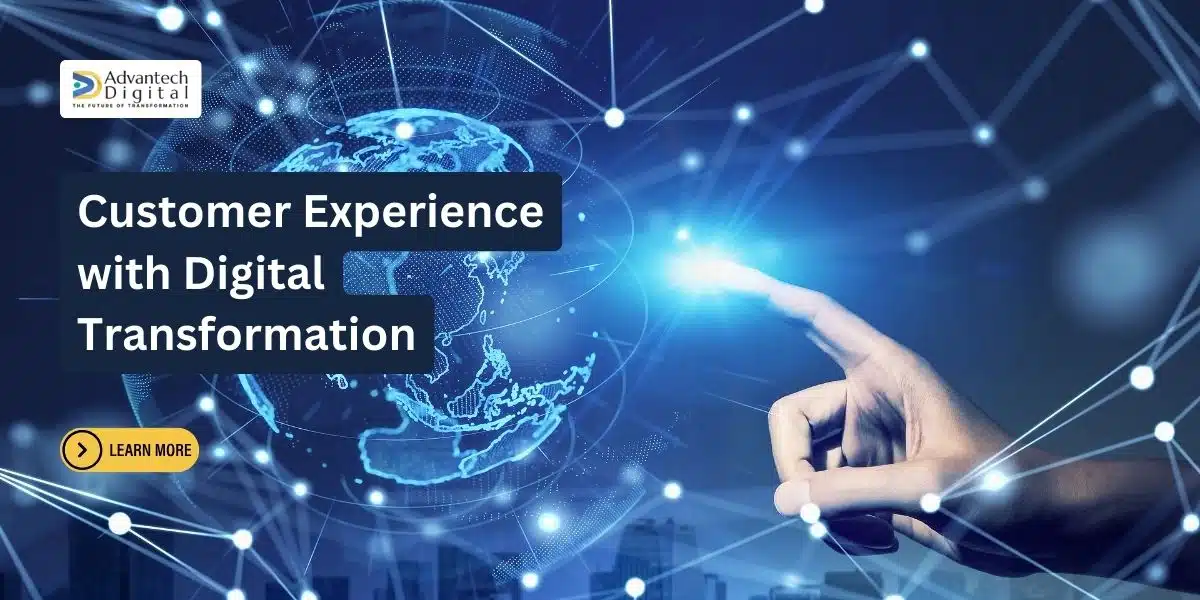Netflix, Nike, and Airbnb have revolutionized their industries through digital transformation. These companies adapted to the fast-paced digital era by innovating their strategies. Digital transformation examples show how organizations use technology to overhaul operations and disrupt traditional models.

About 80% of executives believe digital transformation is crucial for success. Companies that ignore this trend risk losing market share. Over 200 companies have reached $1 billion valuations in the last five years.
The time to reach this milestone has decreased to a median of six years. This rapid growth is attributed to the power of digital transformation.
We’ll explore mind-blowing digital transformation examples from various industries. These cases demonstrate how embracing technology can lead to incredible success. We’ll examine lessons learned and discuss applying these insights to business transformations.
Key Takeaways
- Digital transformation is essential for businesses to stay competitive in today’s digital landscape.
- Successful digital transformation examples showcase the power of leveraging technology to revolutionize operations and enhance customer experiences.
- Companies like Netflix, Nike, and Airbnb have disrupted their industries through innovative digital strategies.
- Embracing change, focusing on customer-centricity, and investing in talent and culture are key lessons learned from these digital transformation examples.
- Businesses must develop industry-specific digital transformation strategies to address unique challenges and opportunities.
The Power of Digital Transformation
Digital transformation is reshaping the business world, helping companies stay competitive. It unlocks new levels of efficiency, adaptability, and customer focus through data-driven innovation and agile transformation. This revolution is changing how businesses operate and serve customers.
Revolutionizing Business Operations
Digital transformation streamlines processes and boosts productivity in business operations. Automation tools and AI systems eliminate manual tasks, freeing time for strategic work. Water Corporation’s new SAP environment saved 1,500 manual labor hours and reduced carbon emissions by 150 metric tons yearly.
Cloud platforms and collaborative tools foster innovation by breaking down silos. This agile approach helps organizations adapt quickly to market changes and seize new opportunities.
Enhancing Customer Experiences
Today’s consumers demand personalized, seamless experiences across all touchpoints. Data-driven insights and digital technologies allow businesses to deliver exceptional customer experiences. This approach sets companies apart from their competitors.
“59% of consumers and 71% of business buyers express that the availability of self-service portals impacts their loyalty.”
Personalization drives digital transformation. AI algorithms analyze customer data to offer tailored recommendations and targeted marketing campaigns. Camping World partnered with IBM to modernize its call centers, improving customer service and operational scalability.
Digital transformation has revolutionized customer service through AI-powered chatbots and self-service portals. These innovations enhance customer experiences, reduce response times, and improve overall satisfaction. They’re available 24/7 to address customer queries efficiently.
Netflix: Disrupting the Entertainment Industry
Netflix has revolutionized entertainment consumption through digital transformation and personalized streaming. It leverages data analytics and a customer-centric approach to disrupt the video rental industry. Netflix has become a global leader in video-on-demand, catering to users’ unique preferences.
Netflix’s success stems from its personalized recommendations. By analyzing user behavior, it suggests content aligned with individual tastes. This data-driven approach has led to high customer satisfaction and retention rates.
As of 2021, Netflix boasted over 209 million paid subscribers worldwide. This impressive figure comes from a study by Digital TV Research.
Blockbuster's Missed Opportunity
Netflix’s dominance contrasts sharply with Blockbuster’s fate. In 2000, Blockbuster declined Netflix’s $50 million buyout offer. This decision proved disastrous as Netflix continued to innovate and adapt.
| Year | Netflix Milestone |
|---|---|
| 1999 | Started snail-mail DVD subscription service |
| 2009 | Branched out into original content |
| 2023 | Became a streaming-only service, ending DVD-by-mail |
Personalized Streaming Experience
Netflix’s personalized streaming service has revolutionized entertainment. It uses big data and analytics to make informed decisions about future content production. This approach ensures Netflix delivers programming that resonates with its audience.
The company’s strategy has led to highly successful original series and movies. These productions further solidify Netflix’s position as a leader in video-on-demand.
“Netflix’s success is attributed to its data-driven approach, resulting in tailored user experiences, high customer satisfaction, and retention rates.” – Marketing Week
Netflix has shown resilience despite challenges like a slight subscriber dip in Q2 2022. The company’s operating margin increased from 18 percent in 2022 to 21 percent in 2023. This growth demonstrates Netflix’s ability to navigate market fluctuations and maintain profitability.
Nike: Innovating Sports Footwear
Nike leads the sports footwear industry globally, revolutionizing operations through digital transformation. The company uses machine learning and recommendation algorithms to enhance design, production, and sales processes. This approach has transformed Nike’s product development and customer engagement strategies.
Advanced Technologies in Product Development
Nike’s product development now integrates cutting-edge technologies for faster, more efficient design workflows. Digitized footwear materials allow designers to create and iterate designs quickly. This streamlined process significantly reduces time-to-market for new products.
Nike’s mobile apps use foot scanning technology to help customers find perfectly fitting shoes. A 2022 Accenture survey found 71% of consumers prefer brands offering AR experiences. This aligns well with Nike’s technology use and customer expectations.
Loyalty Program Success
Nike’s NIKE+ loyalty program has boosted sales and built a strong customer base. By 2023, the program boasted over 150 million members. It offers exclusive perks, personalized recommendations, and engaging content to cultivate brand loyalty.
The program’s success is reflected in Nike’s financial performance. In 2023, DTC sales accounted for over 40% of total revenue. E-commerce sales also increased by 33% in 2022, showcasing the effectiveness of Nike’s digital strategies.
Modernizing Internal Operations
Nike has implemented an ERP system in Greater China, with North America launch planned for 2024. This system will optimize supply chain, inventory management, and financial processes. It enables Nike to operate more efficiently and effectively.
The company hired Dantley Davis as VP of digital design to enhance its digital ecosystem. Nike plans to build a technology center in Atlanta, focusing on digital transformation strategy and innovation.
Nike’s embrace of digital transformation keeps it competitive in the evolving digital landscape. By leveraging advanced technologies and modernizing operations, Nike maintains its position as a global sports footwear leader.
Starbucks: Transforming the Coffee Experience
Starbucks has revolutionized customer engagement through digital transformation. In 2017, they introduced the ‘Digital Flywheel’ initiative to enhance rewards, personalization, payments, and ordering. By integrating cloud-based platforms and AI into their mobile app, Starbucks created a seamless, personalized experience.
The Starbucks mobile app has become a central hub for customer engagement. As of 2021, over 24 million active Starbucks Rewards members use it in the United States. Customers receive tailored offerings through the app, making each interaction unique and memorable.
Mobile orders now account for 26% of all Starbucks transactions in the U.S., up from 11% in 2019. This significant increase highlights the app’s success and growing customer preference for digital convenience.
The mobile ordering feature has streamlined the entire process, saving customers valuable time. Users can place orders ahead, pay through the app, and pick up drinks without waiting in line. This efficiency has led to a growing preference for mobile orders among Starbucks customers.
| Year | Active Starbucks Rewards Members (U.S.) | Mobile Orders as % of Total U.S. Transactions |
|---|---|---|
| 2019 | 16 million | 11% |
| 2021 | 24 million+ | 26% |
Starbucks has also leveraged technology to enhance its supply chain and support coffee farmers. Using Microsoft’s Azure Blockchain Service, they can trace each coffee bean from farm to cup. This digital traceability initiative aims to improve the livelihoods of over 380,000 coffee farmers Starbucks partnered with last year.
“We have a bold ambition to become resource positive and give back more than we take from the planet. Digital traceability is an important step in that direction, providing transparency and empowering farmers.”- Kevin Johnson, Former CEO of Starbucks
Starbucks continues to innovate and embrace digital transformation. Their approach sets a powerful example for businesses seeking to enhance customer experiences and streamline operations in the digital age.
Audi: Redefining Car Shopping
Audi has transformed car shopping with its Audi City micro-showrooms. These urban centers showcase Audi’s entire catalog in an engaging way. Potential buyers can now explore vehicles during their city outings.
Interactive screens are the heart of these micro-showrooms. They display full-size images for realistic car configuration. Customers can customize exteriors, interiors, and features with a simple touch.
Audi City showrooms also offer tablets for virtual car exploration. These devices let customers peek inside vehicles and experience them in motion. They can even hear the engine’s sound, creating a multisensory experience.
Audi's Innovative Technology
| Technology | Description |
|---|---|
| Holoride | Virtual reality entertainment that adapts to the car’s driving movements |
| Augmented Reality Head-Up Display | Overlays digital information onto the windshield for enhanced safety |
| Functions on Demand | Allows customers to add optional extras like park assist retrospectively |
Audi’s innovation goes beyond showrooms. They’ve introduced holoride, a VR system syncing with car movements. Their augmented reality head-up display enhances driving safety. “Functions on demand” lets customers add features post-purchase.
The Future of Car Shopping
Audi’s micro-showrooms and technologies have redefined car shopping. They’ve combined urban convenience with virtual reality and interactive displays. This approach makes car discovery more accessible and personalized.
As the automotive industry evolves, more brands may follow Audi’s innovative lead. The future of car shopping is becoming increasingly immersive and customer-centric.
Adobe: From Boxed Software to Cloud-Based Solutions
Adobe revolutionized its business by shifting from traditional boxed software to cloud-based, software-as-a-service (SaaS). This transformation enhanced customer experiences and fostered innovation. The strategic move reshaped Adobe’s operations and market position.
Transitioning to Software-as-a-Service
CIO Cynthia Stoddard led Adobe’s technology stack modernization and cloud computing adoption. She advocated for a strategic, calculated approach rather than wholesale replacement. The SaaS model provided insights into customer behavior and product usage.
This shift enabled data-driven operations and decision-making. Adobe’s move to cloud-based services proved transformative for its business model and customer relationships.
Strategic Acquisitions
Adobe bolstered its market position through strategic acquisitions complementing its cloud-based offerings. These included an e-commerce platform and web analytics company. Such acquisitions expanded Adobe’s capabilities, allowing for comprehensive customer solutions.
“Keeping technology up-to-date is advised by Stoddard, suggesting allocating a portion of the budget for technology refreshers.”
Employee-Focused Work Culture
Adobe invested in fostering an employee-focused work culture alongside technological advancements. The company prioritized collaboration across business units, enabling IT to be an effective enabler. This culture of self-service and innovation empowered employees to drive digital transformation.
| Year | Creative Cloud Revenue | Recurring Annual Subscriptions |
|---|---|---|
| 2015 | $1.8 billion | $1.1 billion |
| 2017 (expected) | $4.2 billion | $4.0 billion |
Adobe’s digital transformation significantly impacted its financial performance. The subscription-based model led to nearly 4X growth in recurring annual subscription revenue. Despite initial decline, the recurring model attracted millions of customers.
This strategy established Adobe as a leader in the cloud-based software industry. The company’s successful transition demonstrates the power of embracing digital innovation.
Airbnb: Reimagining Travel Accommodations
Airbnb has transformed travel by offering a unique alternative to hotels. It connects millions of guests with hosts globally, creating a vibrant community of travelers and hosts. The platform operates in over 34,000 cities across 191 countries.
Unique Spaces and Local Experiences
Airbnb stands out by offering diverse accommodations and local experiences. Options range from cozy apartments to quirky treehouses, catering to various traveler preferences. Guests can immerse themselves in local culture, experiencing destinations through a resident’s perspective.
Hosts are crucial in creating authentic experiences on Airbnb. They earn an average of $8,000 annually from their listings. Airbnb charges hosts 3-12% fees and guests a 9% fee.
The platform’s growth has been impressive. Listings increased from about 75,000 in 2012 to over 2,000,000 in 2016.
Seamless Digital Booking Process
Airbnb’s success stems from its user-friendly digital interfaces. The website and mobile app allow easy searching, comparing, and booking of accommodations. Detailed descriptions, high-quality photos, and user reviews provide valuable insights into each listing.
| Year | Number of Listings |
|---|---|
| 2012 | 75,000 |
| 2016 | 2,000,000 |
Airbnb’s digital transformation benefits both travelers and hosts. The Smart Pricing feature helps hosts maximize revenue by dynamically pricing listings. This innovative approach optimizes earnings while providing competitive rates for guests.
“Airbnb’s latest innovation, Trips, provides immersive cultural activities and plans for adding flights and services in the future. There is potential to charge fees to advertisers based on acquisitions made by guests through the app.” – Reuters
Airbnb continues to expand its offerings, including the introduction of Trips for immersive cultural activities. The company aims to become a comprehensive travel solution. With plans to add flights and services, Airbnb is set to further revolutionize the travel industry.
Digital Transformation Examples: Lessons Learned
Companies’ digital transformation journeys offer valuable insights for organizations starting their own initiatives. Examining successes and challenges reveals key factors for effective change management and successful digital transformation. These lessons can guide businesses through their own transformative processes.
Embracing Change and Innovation
Successful digital transformation requires embracing change and fostering innovation. Organizations that thrive in the digital landscape adapt to shifting market dynamics and technological advancements. This flexibility allows them to stay competitive and relevant.
Consider the following statistics:
- Johnson & Johnson achieved a 60% reduction in instrument trays required for cases and instrument sterilization costs through its AI-based Advance Case Management (ACM) platform.
- Walmart increased the number of fulfilled orders by nearly 40% in one year through its delivery platform service Walmart Go Local.
- Domino’s saw a significant increase in revenue streams by reshaping the pizza ordering process with digital innovations such as the ordering bot DOM and Domino’s AnyWare integrations.
Focusing on Customer-Centricity
Adopting a customer-centric approach is crucial for digital transformation success. Successful initiatives prioritize enhancing customer experiences and delivering value to end-users. Understanding customer needs allows organizations to develop innovative solutions that meet evolving expectations.
Consider the following examples:
| Company | Customer-Centric Initiative | Impact |
|---|---|---|
| Spotify | Personalized music recommendations | 30% of music streaming subscribers worldwide |
| Tesla | AI and Big Data for product development | Improved operational efficiency and customer satisfaction |
Investing in Talent and Culture
Digital transformation success requires investing in talent development and fostering an employee-focused work culture. Organizations must equip their workforce with skills to thrive in a digital environment. Nurturing continuous learning and collaboration helps companies harness their human capital’s full potential.
“Continuous learning and seeking external resources are vital for successful digital transformations.”
The lessons from digital transformation examples highlight the importance of embracing change and adopting a customer-centric approach. Investing in talent development is equally crucial. Applying these insights helps organizations navigate digital transformation complexities and achieve long-term success.
Conclusion
Digital transformation examples showcase the power of embracing change and leveraging technology for competitive advantage. Netflix and Airbnb have disrupted industries, setting new standards for customer experience and operational efficiency.
Digital transformation is an ongoing journey, not a one-time event. Organizations must remain agile as technology advances rapidly. This requires aligning digital initiatives with business goals and fostering innovation.
At Advantech Digital, we help businesses navigate the complex digital landscape. Our experts provide guidance and solutions to unlock the full potential of digital technologies.
These examples highlight technology’s transformative power. By embracing change and focusing on customer needs, organizations can thrive in the digital age. Let’s collaborate to build a more connected future for all.
FAQ
What are some key benefits of digital transformation for businesses?
Digital transformation enhances efficiency through automation and improves customer experiences with personalized interactions. It increases agility to adapt to market changes and enables data-driven decision-making. This transformation also offers innovation opportunities, scalable solutions for growth, seamless collaboration, and robust security measures.
How did Netflix disrupt the entertainment industry through digital transformation?
Netflix revolutionized entertainment by offering an online viewing system that addressed customer concerns with traditional video rental services. Their personalized streaming experiences altered consumer buying habits. This transformation changed how people watch movies and TV shows.
What digital technologies has Nike incorporated into its business model?
Nike embraced mobile devices and advanced technologies like machine learning and recommendation algorithms. Their mobile apps help customers choose shoes based on foot scans. The NIKE+ loyalty program has significantly boosted sales through personalized offerings.
How has Starbucks leveraged digital transformation to enhance the customer experience?
Starbucks launched the ‘Digital Flywheel’ initiative in 2017 to transform rewards, personalization, payments, and ordering. They integrated cloud-based platforms and AI into their app. This allows them to personalize product offerings and rewards based on consumer preferences.
What innovative showroom concept did Audi introduce as part of its digital transformation?
Audi created the Audi City concept, featuring micro-showrooms in city centers. These spaces use interactive screens and tablets to showcase their entire car catalog. This approach makes car-buying enjoyable and accessible, enabling advanced configuration and virtual exploration.
How did Adobe transition from a license-based model to a subscription-based model?
Adobe transformed its business by creating three cloud-based solutions: Creative Cloud, Document Cloud, and Experience Cloud. They made strategic acquisitions and invested in an employee-focused work culture. Adobe adopted a data-driven operation model to monitor its health.
What makes Airbnb’s digital transformation unique in the hospitality industry?
Airbnb transformed hospitality by offering unique spaces and local experiences hosted by locals. Their sleek digital interfaces provide a seamless booking process. User reviews add transparency to each stay, creating a new era of travel accommodations.
What are some key lessons learned from the digital transformation examples discussed?
These examples highlight the importance of embracing change and fostering innovation. Adopting a customer-centric approach and investing in talent are crucial. Digital transformation requires long-term commitment and willingness to adapt to change.















4 thoughts on “Best Most Mind-Blowing Digital Transformation Examples”
Comments are closed.